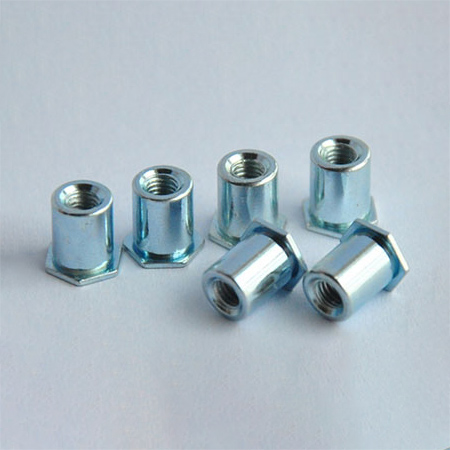In recent years, Cold Heading Pressure Riveting Studs have emerged as crucial components across various industries, driven by their superior performance, cost-effectiveness, and reliability. This article aims to analyze the market demand and trends of Cold Heading Pressure Riveting Studs, including market size, growth rates, and future prospects.

Market Demand
The demand for Cold Heading Pressure Riveting Studs has been steadily increasing, propelled by their widespread applications in automotive, aerospace, construction, and electronics industries. These studs offer a reliable and efficient fastening solution for joining materials with high strength and precision, meeting the stringent requirements of modern manufacturing processes.
Automotive Industry
In the automotive sector, Cold Heading Pressure Riveting Studs are extensively used in vehicle assembly for joining components such as body panels, chassis, and structural elements. The demand is driven by the automotive industry's focus on lightweighting, fuel efficiency, and structural integrity, where these studs provide a lightweight yet robust fastening solution.
Aerospace and Defense
In the aerospace and defense industries, Cold Heading Pressure Riveting Studs play a critical role in aircraft assembly, where they are employed for joining structural components, interior fittings, and avionics equipment. The increasing demand for lightweight materials, such as aluminum and titanium alloys, further drives the adoption of these studs for aerospace applications.
Construction Sector
In the construction sector, Cold Heading Pressure Riveting Studs are utilized in structural steelwork, prefabricated building systems, and curtain wall installations. Their high strength, corrosion resistance, and ease of installation make them an ideal choice for fastening structural elements in high-rise buildings, bridges, and infrastructure projects.
Electronics and Consumer Goods
The electronics and consumer goods industries also contribute to the demand for Cold Heading Pressure Riveting Studs, particularly in the assembly of electronic devices, appliances, and consumer products. These studs are used for securing components, mounting hardware, and ensuring structural integrity in various electronic devices and appliances.
Market Trends
Several key trends are shaping the market dynamics of Cold Heading Pressure Riveting Studs:
Technological Advancements
Continuous advancements in manufacturing technologies, such as cold heading processes, CNC machining, and automation, are enhancing the efficiency, precision, and cost-effectiveness of Cold Heading Pressure Riveting Studs production.
Material Innovations
The development of advanced materials, including high-strength alloys, lightweight composites, and corrosion-resistant coatings, is expanding the application scope of Cold Heading Pressure Riveting Studs across diverse industries.
Growing Emphasis on Sustainability
With increasing emphasis on sustainability and environmental conservation, there is a rising demand for eco-friendly fastening solutions. Cold Heading Pressure Riveting Studs, with their potential for material optimization, waste reduction, and energy efficiency, are aligning with these sustainability goals.
Market Expansion in Emerging Economies
Emerging economies, particularly in Asia-Pacific and Latin America, are witnessing rapid industrialization, urbanization, and infrastructure development. This is driving the demand for Cold Heading Pressure Riveting Studs in sectors such as automotive, construction, and manufacturing.
Future Outlook
Looking ahead, the market outlook for Cold Heading Pressure Riveting Studs remains promising, fueled by ongoing technological innovations, expanding applications, and increasing demand from key end-user industries. As manufacturers continue to focus on lightweighting, structural optimization, and cost-efficiency, Cold Heading Pressure Riveting Studs are poised to play a pivotal role in meeting these evolving needs.